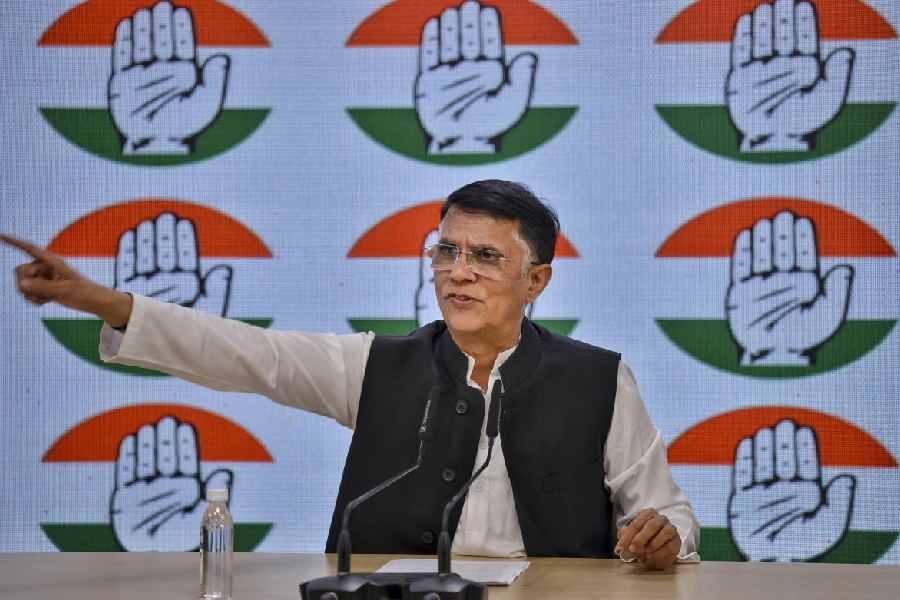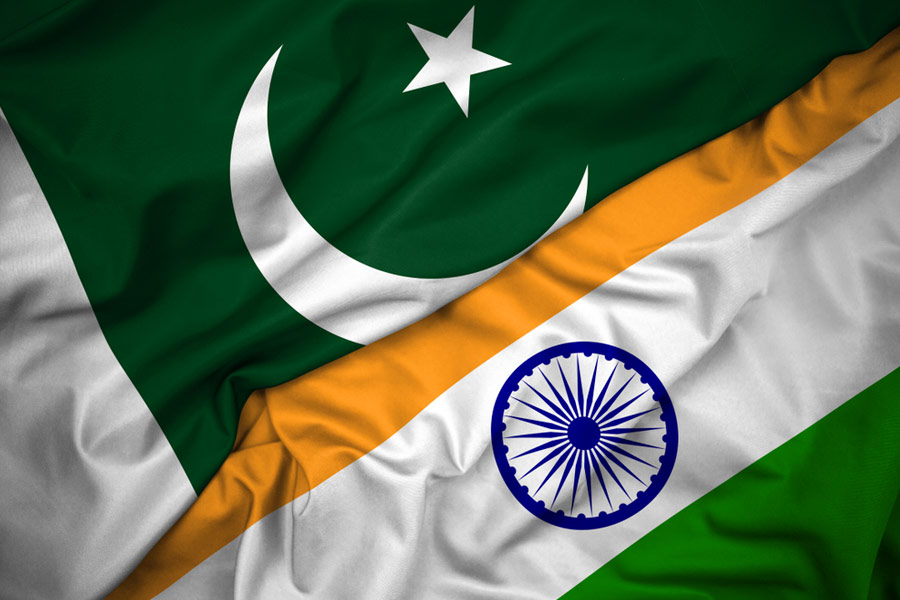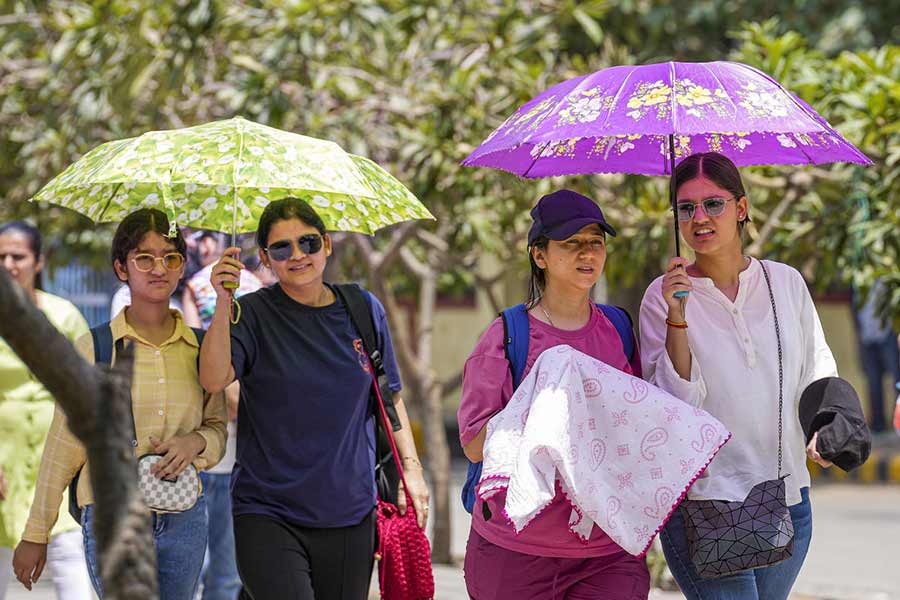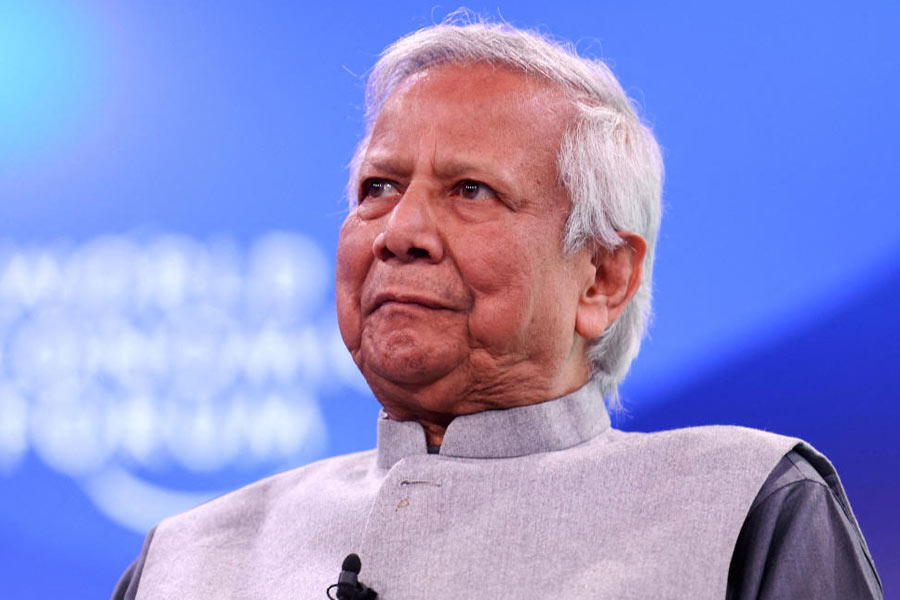|
|
| Entrancing visions |
Desmond Doig was lost. I had to deliver him to Sir Edmund Hillary at the Royal Geographical Society in Kensington and he couldn’t be found until someone said he was with the Ballet Ram. I telephoned Ram Gopal, the famous dancer who lived in London, but he had never heard of Desmond. Or of the Ballet Ram. “My dear,” he cooed, “everybody uses my name!”
That was 43 years ago. I had met Ram nearly two years before when he had inscribed Rhythm in the Heavens, his autobiography, with extravagance but a disdain for punctuation, “For Sunanda My little brother. I have faith, hope and love in all you will do in the service of your work — Hitch then your wagon to the Highest and brightest in Truth, beauty and God. Yours ever, Ram. January 1959, Newcastle.” I last saw him in 1968 or 1969, twice in fact, once at an India House reception for Indira Gandhi and once at a tea at the high commissioner’s residence in Millionaire’s Row, as Kensington Palace Gardens was called.
It was a shock, therefore, to open the papers and find myself staring at Ram. Not Ram as one knew him offstage, nor the frail wreck he must have become in the last decades of neglected obscurity but the bejewelled semi-nude splendour that had dazzled audiences and captured the world’s admiring attention 60 and more years ago. Maharaja Jayachamaraja Wodeyar of Mysore, Vaslav Nijinsky of the Diaghilev ballet and Arthur Rubinstein had all been captivated. “Ram Gopal tears us away from the untruths of everyday life into the reality of his mystic visions,” wrote Carl Van Vechten, writer and critic, when he entranced London with his first performance at the Aldwych theatre in 1939.
He died forgotten and alone in an institution in south London on October 12. All the British quality newspapers carried huge obituaries with those glamorous pictures that it had once been my job to dish out to anyone who cared. They all noted his embittered relationship with India. “Whenever he returned to India, Gopal felt himself the victim of intrigues” wrote one. “The government of India gave him sparse support for his foreign tours,” said another. Queen Elizabeth’s OBE, bestowed in 1999, seemed to bear out the truth of that saying about prophets not being honoured at home.
His peak was already behind him in 1959, when I timidly ventured backstage at the Theatre Royal in Newcastle upon Tyne. I need not have worried. Ram always welcomed the press and an Indian reporter in the English provinces was a rare animal in those far-off days. We talked deep into the night, and a few weeks later he telephoned from London to ask if I would go to Dublin, where his Trio de Ballet was performing later in the season, and handle the publicity. The £10 a week he offered was more than I earned on the newspaper; the air fares that went with the job were especially attractive. I had never been in an aeroplane.
My chief reporter advised me to ask for the leave I was owed. So I did, and other assignments followed. I went to Edinburgh for Ram and then a season in London’s Shaftesbury theatre that marked an artistic high-water mark, for he and Dame Alicia Markova recreated the Radha-Krishna pas de deux that Uday Shankar and Anna Pavlova had danced many years before. I think Sir William Rothenstein, who persuaded Shankar to give up art classes for dancing, had scripted the number; I also realized that Shankar and Pavlova obsessed Ram and Markova.
They had got hold of a large scrapbook of the pioneering performance and were determined to do everything right — and better. Even the dresses copied the original down to the last detail. The result wasn’t always felicitous. During rehearsal one day, a high Cockney voice shrilled out from under the pyramid of pink gauze centrestage. “Ah can’t see nothin’” wailed Markova. The star of the Ballet Russe, American Ballet Theatre and Festival Ballet had been born Alice Marks in London’s East End.
In between, I stayed for short spells in the lavishly appointed flat just off Sloane Square that Ram shared with three other men, a Pole, a Dutchman and an American who had little interest in the arts. I suspected that their pooled resources were needed to pay for the fashionable address. That business arrangement suggested a side that was far removed from the magic and mystery of Ram’s artistry behind the footlights. I glimpsed someone who had to struggle on the shifting sands of uncertainty to keep up appearances.
Sitting at his kitchen table in a black kimono, Ram once drew a circle for me, then drew a number of radial lines to cut it up into unequal segments. The biggest, he said, was my work. Next came family. There were segments for religion, sex and social life. The last, he said, pencil poised above the smallest, is you. “Keep it private,” he advised. “No one must know.”
I wondered then — as I still do — how much of Ram was tucked away in that last secret chamber. How much that was in the public domain was really true. Some of London’s best-known critics laughed outright in 1960 when I told them the age Ram had given me. That doubt has resurfaced in some obituaries.
Some question whether he was really born in Bangalore of a Rajput father and Burmese mother, as he said. The stories of parental opposition even in the face of royal and viceregal patronage may have been exaggerated. His claim that it was Gandhi himself who suggested the verbal introductions with which he prefaced the short spectacular items that he adapted from Kathakali, Bharata- natyam and Manipuri dancing sometimes invited scepticism.
The introductions spelt trouble for me in Dublin. Trio de Ballet also included a supposedly Russian ballerina (past her prime and always accompanied by her mother in a fur coat) and her husband, an American pianist. One day out of the blue, the pianist announced that if Ram could talk about his dances he would talk about the pieces he played and their composers, and I should arrange the programme accordingly. There was the most fearful row with everyone threatening to fly back to London until the ballerina tearfully begged her husband to drop his entirely just demand in the cause of art and not to be mean-spirited like Ram who hogged the limelight.
On another occasion, Ram punctured my pride in having persuaded a newspaper columnist to refer to the ballerina as prima ballerina assoluta, by telling me that he alone deserved dancing’s ultimate accolade. Under that velvet purr was the steel ring of the reminder that he — not the Trio — paid my wages. I could understand, therefore, La Meri, the American ethnic danseuse, who had visited India in 1937 and taken a fancy to Ram, abandoning him in a huff in Tokyo and storming back to the States. Japanese critics had ignored her while raving about her young protégé as “the soul of genius” and the “physical form of a perfect dancer”.
Uday Shankar was an exotic flash in Britain’s pan. Ram’s was a more sustained and steady light. But there was never enough fuel. Brown was not beautiful, and ethnicity had not become fashionable. My English informant may have confused Desmond’s partner, Baliram, with Ballet Ram but Ram’s fame was of so little account that Newcastle’s Marimba coffee bar would not admit him since he was not a member. The dance schools he started petered out, some of his ambitious choreographs never took off and tours had to be abandoned because of inadequate support. Governments were not into art. He could have been a graceful bridge between East and West, but Ram Gopal lived before his time.












